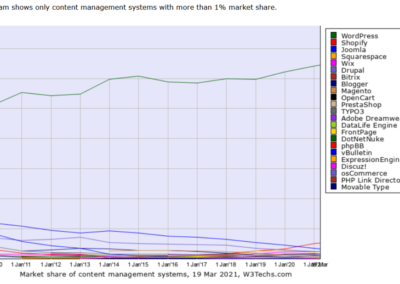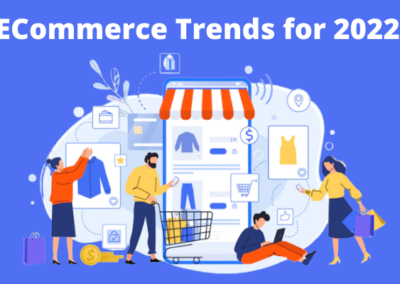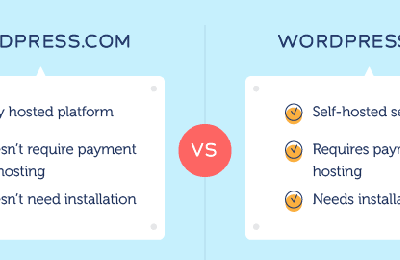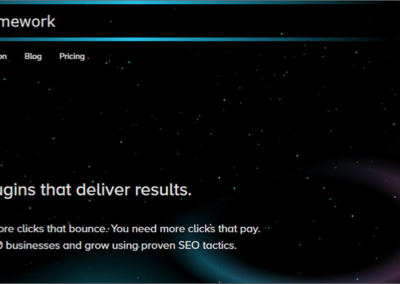Shopping has changed immensely because of the pandemic. People opt to shop online, and when your website is not ready for your customers, your business will fail.
Web design is your first line of offense; that’s why e-commerce stores these days need to focus on design. Websites should look outstanding and seamless to use. By doing so, you’re attracting new clients and retaining the old ones.
You can’t just build a poorly made site and expect sales to come flooding in.
By knowing and understanding the latest e-commerce design trends, you can create an online store that will attract customers and leave your competitors in the dust. Conversely, adapting outdated trends risks you falling behind.
This post will discuss the top nine ecommerce design trends you should know in 2022.
1. Simple and Minimalist Design
While your website should have all the needed features, it should remain minimalist and professional on the front end. This process allows users to efficiently search products and for your site to load quickly.
It would allow you to manage everything more efficiently on the back-end, providing all the features and services without creating problems or confusion for users.
Adapting a simple and minimalist design is a significant trend to follow if you own a small business. Most consumers are impatient regarding page loading times and won’t think twice about leaving your site. By reducing clutter, you can keep users on your site longer.
2. Interactive Design Works
People love interacting with brands. This trend started years ago and continues to prosper. Here are some ways a brand can utilize interactiveness:
- Show the benefits of your products using 3D models
- Gather customer reactions through micro-interactions
- Tell your brand story using interactive tools
People who prefer to shop online want an interactive experience with the product before purchasing. In fact, 49% of millennial and Gen Z consumers have gone to physical stores because they want more interactive experiences. You can address this problem by utilizing smart mirrors, augmented reality, and interactive signages.
Offering this to your customers is a sure-fire way to engage with your customers during the purchase-decision-making time.
3. Micro-Interactions
Just like you would with your brick-and-mortar store, you need to keep your visitors entertained to prevent them from leaving your site and spending their money elsewhere.
A crafty yet straightforward way to engage with your customers is through micro-interactions. Usually, these are subtle signals to the user that guide them through actions.
For instance, you can use micro-interactions to relay extra information. But you’re using it subtly so that it won’t overwhelm users with too much content. You can also use them aesthetically to make a point.
When thinking about your e-commerce store design, consider adding micro-interactions to help your customers with their shopping journey.
4. Unconventional Layouts
Many businesses rely on e-commerce platforms like Shopify that provide a range of standard-design templates that follow a small, set number of structures such as the F-layout and the single-column layout.
The problem with this is that while they’re easy to set up, these have become common in that they fail to deliver an element of surprise to users.
With unconventional layouts, on the other hand, a business can break the mold, thriving in oddity. Their websites, apps, and online pages incorporate themes like a well-curated art gallery with an infinite scroll.
They may also combine elements like interactive photos and videos, resulting in an interesting experience. By doing so, your website can achieve brand retention, better user engagement, and conversion rates.
It would help if you also push your creative boundaries. Create a layout that isn’t purely for aesthetics. Think of your layout design as an opportunity to sell your business story.
5. Vertically Aligned Menus
While most websites were created to be responsive and can fit different screen sizes initially, it soon became apparent that most horizontal menus don’t work well on mobile screens.
As a result, many e-commerce sites have vertically aligned menus placed on either side of the page. It’s also easier to scale and doesn’t take a lot of space.
In the same way, vertically aligned menus tend to be highly intuitive and practical. Horizontal menus can be integrated with primary navigational links. Meanwhile, vertical menus can be used for secondary links.
Using this approach maximizes space and provides a better alternative to the standard navigational displays that most are accustomed to.
6. Simple Cart Checkout
When customers decide to purchase something from your site and add these products to the cart, finalizing the order should be safe and less complicated.
Ideally, it should be easy for them to create a new account or log in and have fast, easy, and secure payment options when completing the order. Cash on delivery should be an option.
The checkout process should also have minimum clicks when completing the order.
7. Increased Personalization
The concept behind personalization is making it easy for site visitors to find what they’re looking for. Users that return your site, again and again, may benefit from personalized content.
So, by showing your online customers recently saved, accessed, or liked products, your e-commerce store can have better conversions. You can also remind returning customers of their abandoned cart content for better conversion rates.
8. Voice-Activated Interface
Web design continues to evolve and accommodates the growing popularity of virtual assistance and voice chatbots.
Although most e-commerce sites do not have a voice-activated interface yet, this trend continues to soar in popularity this 2022.
A voice-activated interface stimulates dialogue between the device and the user, allowing users to look up information using only their voice.
9. Filtering Controls
Filters are one of the essential functions of an e-commerce site, allowing them to find the product they’re looking for quickly.
2022 is all about streamlining and improving your customers’ online experience. For instance, you won’t use a bunch of checkboxes or dropdowns for every filter option. Instead, filters perfectly fit the input type, making the product filtering process more intuitive.
10. Fast Loading Page
Because of Google’s Core Web Vitals algorithm update last year, mobile speed is one of the most important ranking factors for websites.
Remember that even mere milliseconds matter when it comes to site loading. If your website takes additional time to load, a prospective customer might move to another site. You couldn’t afford this to happen, of course.
Over to You
These top e-commerce design trends are all about customer engagement and comfort. It always pays if you involve your customers in the online buying process.
Implementing these trends helps your e-commerce business grow and makes you stand out from the rest of the pack. It also increases word-of-mouth marketing, wherein visitors recommend their friends and family to check out your site.
About the Author:
Kenneth Sytian is the Owner and CEO of Sytian Productions Web Design Philippines. He has been designing websites and developing web apps for more than a decade. He is the driving force behind the company and influencer in the industry of web design and development in the Philippines.







0 Comments